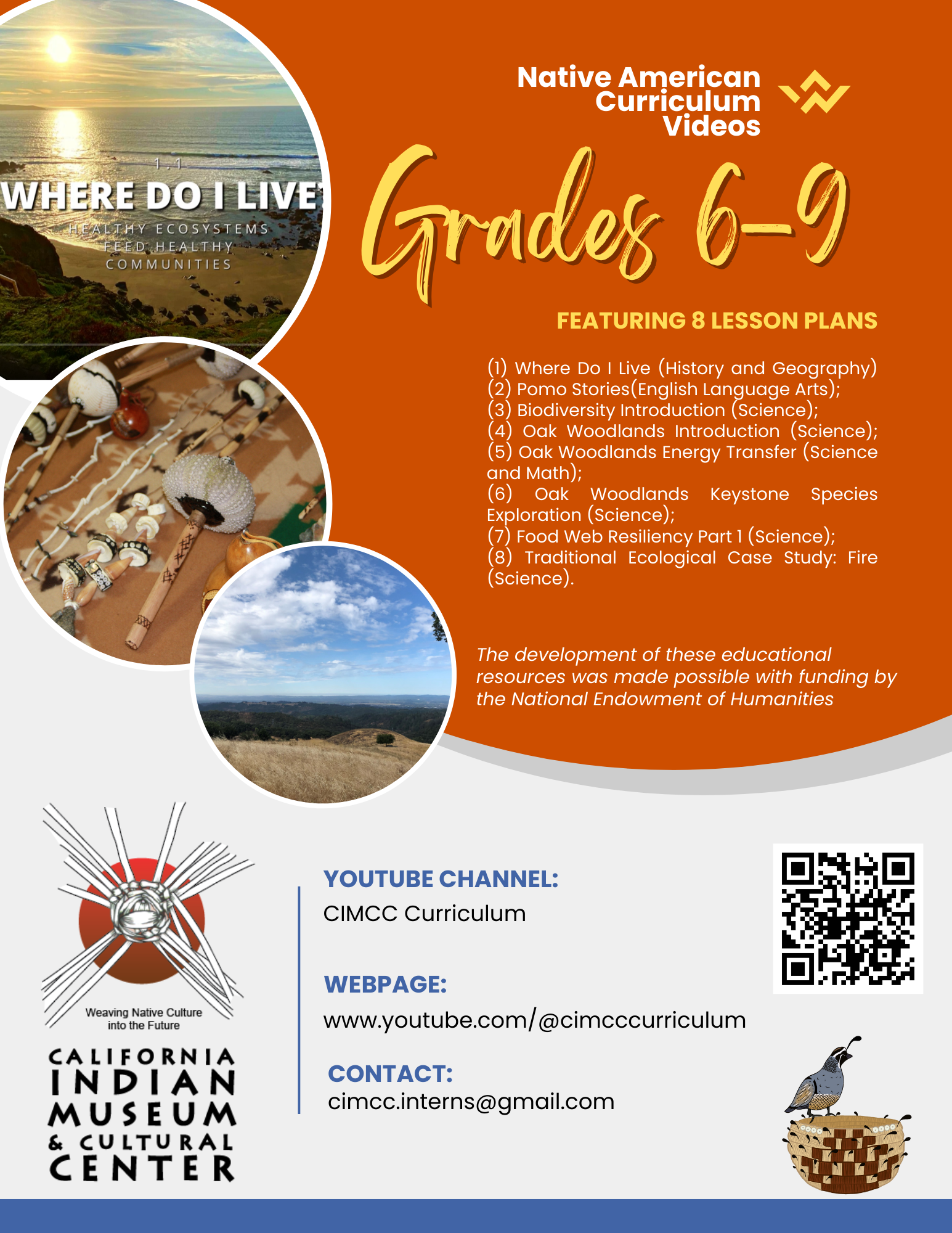Healthy Ecosystems Curriculum
The following curriculum was created in partnership for the California Indian Museum and Cultural Center by Redbud Resource Group
“Healthy eating does not start with the chopping, cooking, and eating of ingredients. It starts with conscious land stewardship. Long before our food makes it to our plates, it often exists as plant or animals species in unique ecosystems that thrive off of biodiversity. For many Native peoples, the abundance and availability of traditional food sources relies on the health of these ecosystems. Biodiversity in California’s oak woodland ecosystem is supported by local Native peoples, and has been since Time immemorial.
In this curriculum student learn:
-
Methods for supporting a resilient ecosystem.
-
Impacts of over-consumption, industrial development, and natural disasters on ecosystem resiliency.
-
How Indigenous foods support a healthy diet.
Tribal Focus: Pomo
Subjects: Environmental Science, Nutrition, Mathematics, English Language Arts
Grades: 6-9
Standards: NGSS, Common Core, CA Indian Essential Understandings, CA Healthy Schools Guidelines
Section 1: Biodiversity in California’s Oak Woodlands
In Part 1, students explore California’s oak woodland ecosystem from a Native perspective. Students learn about the importance of biodiversity in protecting traditional foods. For the Pomo people in northern California, having reliable access to healthy traditional foods requires stewardship of the natural environment in which those foods are produced. Students have the opportunity to learn about the Pomo relationship to the land through contemporary and historical stories, model scientific phenomena that lead to ecosystem resiliency, and apply their knowledge to problems around organism population and sustainability. This section includes supplementary tools from a range of online education sources to support student learning.
Lesson 3 – Biodiversity Introduction
Lesson 4 – Oak Woodlands Introduction
Lesson 5 – Oak Woodlands Energy Transfer
Lesson 6 – Oak Woodland Keystone Species Exploration
Lesson 7 – Food Web Resiliency
Lesson 8 – Traditional Ecological Case Study: Fire
Educational videos to support the curriculum:
Section 2: Native Foods and Nutrition
In Part 2, students discover the health benefits of integrating local Native foods into their diets. Students read about Native experiences with introduced, settler foods, and reflect on the benefits of having a cultural connection to the foods they consume. Activities exploring food insecurity and the accessibility of Native foods help students reflect on the health of their own communities. Students have the opportunity to reflect on their own diet and nutrition, as well as the role food plays in their families. This section includes supplementary tools from a range of online education sources to support student learning.”
Lesson 1 – Native Foods for Today’s World
Lesson 4 – Native Foods Case Study
Lesson 5 – My Community: Food Access

